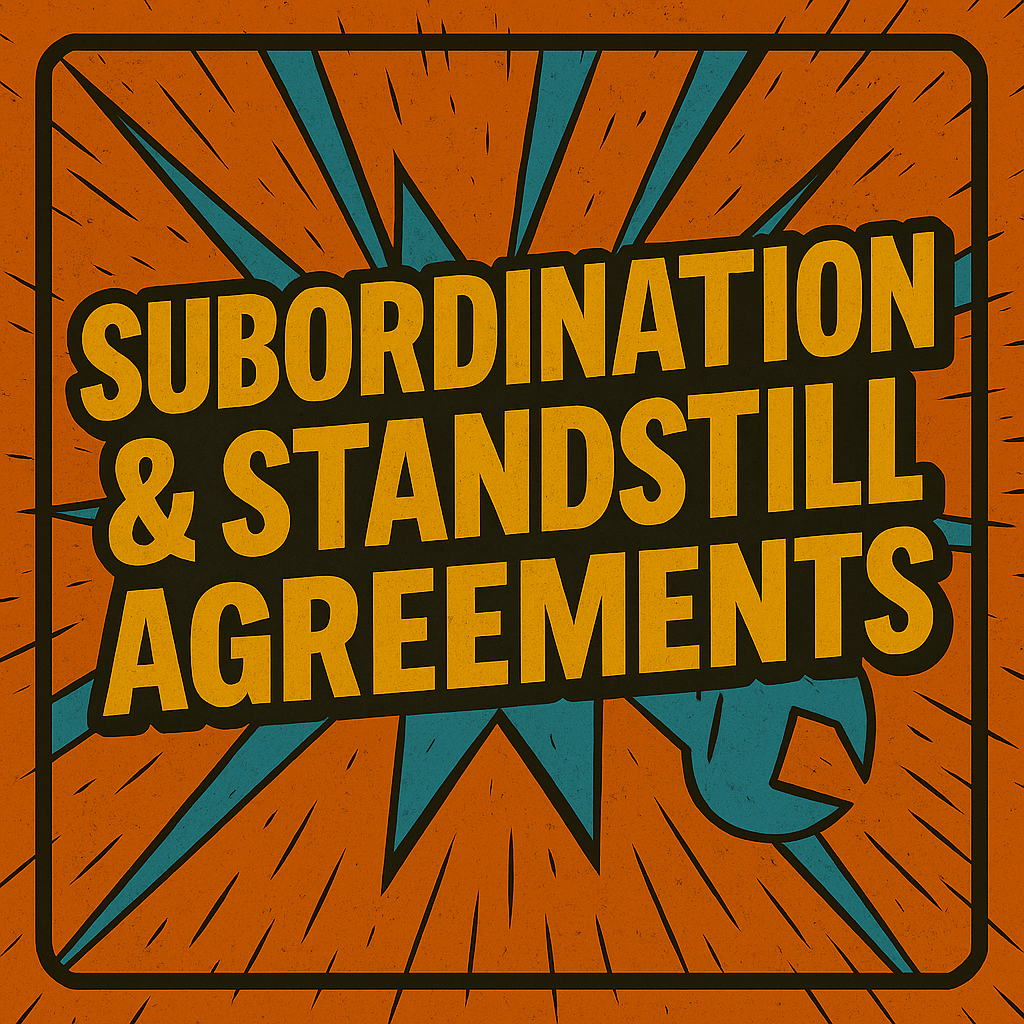Subordination & Standstill Agreements
“Wait your turn, junior”

Subordination and Standstill Agreements are vital components in more complex capital structures, especially when multiple creditors are involved. These agreements help define who gets paid first and under what conditions — crucial to both risk management and deal negotiation.
They are legal contracts that define how different lenders or creditors relate to each other in terms of repayment rights and remedies — especially in default scenarios
Where They Show Up
- Multi-lender real estate deals
- Private equity or leveraged buyouts
- Seller-financed business sales
- Asset-based lending layered with unsecured lines
- Venture debt paired with bank financing
Subordination Agreement
Definition:
A legal agreement where one lender (the subordinated lender) agrees to rank behind another lender (the senior lender) in priority of repayment.
Purpose:
To protect the senior lender’s position and clarify that they get paid first in the event of borrower default, liquidation, or bankruptcy.
Common Example:
- A business takes a loan from a bank secured by all assets (senior position).
- Later, it takes mezzanine or seller financing.
- The second lender agrees via subordination to stand behind the bank in any claim.
Standstill Agreement
Definition:
A contract where a junior lender agrees not to take action (such as pursuing legal remedies or foreclosing) for a specific period of time if the borrower defaults.
Purpose:
To give the senior lender time and space to manage the default without interference from other creditors.
Common Provisions:
- No enforcement by junior lender for 90–180 days after a default.
- Must give notice to senior lender before taking action.
- May prohibit certain actions altogether unless approved by the senior lender.
Why they’re so important in commercial finance
| Benefit | Explanation |
|---|---|
| Clarity in Enforcement | Prevents multiple creditors from competing for assets in default |
| Loan Structuring Tool | Enables layered financing (e.g., senior + mezzanine) |
| Risk Control | Gives senior lenders comfort to provide funding |
| Negotiation Leverage | Protects each party’s economic interest and exit strategy |
Example: Seller Note in a Business Acquisition
Structure Example:
- Purchase Price: $2,000,000
- Financing:
- $1,500,000 Senior Term Loan from a bank (secured by business assets)
- $500,000 Seller Note (subordinated to bank)
Subordination Terms:
- Seller agrees to take no payments on their note unless the senior loan is current.
- If the buyer defaults, the seller note is last in line for repayment and may have a standstill period (e.g., 120 days) before the seller can take legal action.
Why It Works:
- Bank gets first priority.
- Seller still contributes to deal structure — often with higher interest as compensation.
Example: Mezzanine Debt in Real Estate Development
Structure Example:
Total Capital Needed: $10,000,000
Financing:
$7,000,000 Senior Construction Loan (secured by property)
$2,000,000 Mezzanine Debt (unsecured or second lien)
$1,000,000 Developer Equity
Subordination Terms:
Mezz lender agrees to contractual subordination behind the bank.
May include a standstill clause — e.g., can’t accelerate or sue for 180 days post-default.
Why It Works:
Bank is protected with top priority.
Mezzanine fills the funding gap with higher yield expectations.

Considerations for Borrowers
Understand that subordination can limit flexibility with junior lenders.
Standstill provisions can delay access to remedies for junior lenders.
These agreements may restrict refinancing or additional borrowing.
Often non-negotiable with institutional senior lenders.

